A Walk through the streets of Harappa
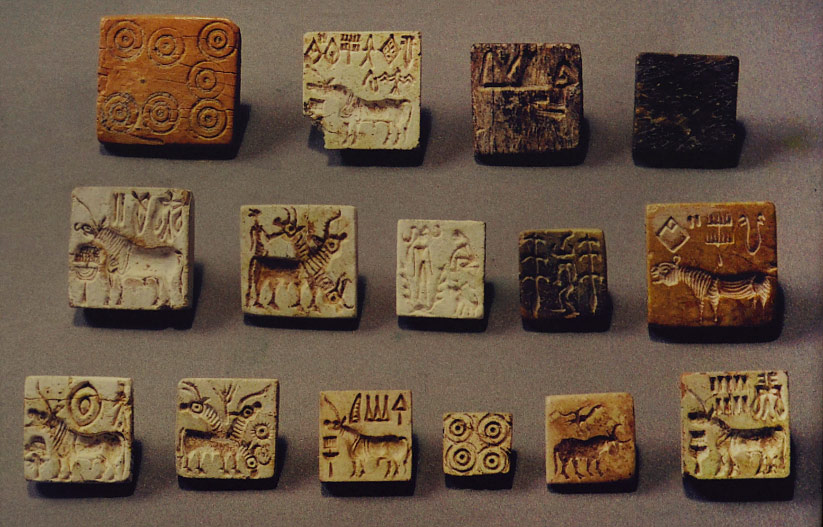
As the rising sun marked the beginning of a new day, the citizens of the ancient Indus Valley civilisation ventured out of their houses to see a vibrant scene unfolding before their eyes. In various parts of many towns and cities, workshops and factories were set up, where skilled craftsmen were engaged in manufacturing various products; some workers carefully arranged precious beads to make beautiful necklaces; some of them worked with ivory and shell to make aesthetically-pleasing bangles; some of them designed head-dresses, shawls and skirts and some of the craftsmen dedicatedly made toy-carts & well-shaped figurines out of clay and wood.
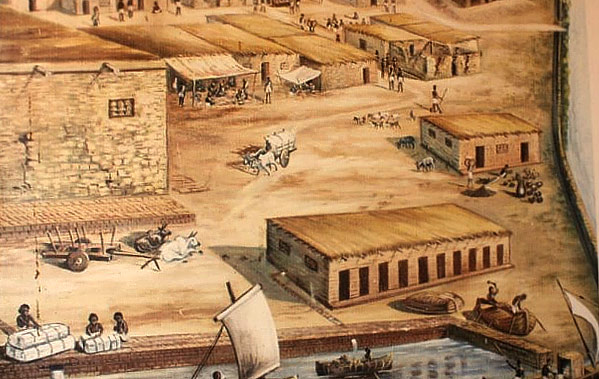
Once these wonderful products were ready, they were transported to market places, within the Indus realms and also outside of it. Some of these goods were sent to the major centers such as Mohenjo-daro and Harappa. Men, women and children came to see and procure the products of their liking. A babel of voices emerged from some shops as a crowd gazed at a beautiful collection of items; shawls, skirts, necklaces, bangles, combs, earrings, pins, decorative beads, anklets, pendants, toys, figurines, pots, head-dresses and much more.
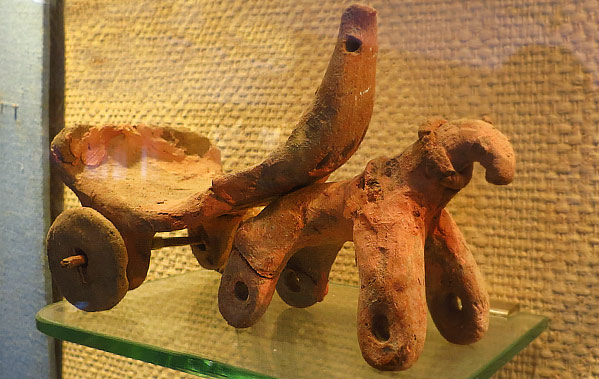
Children restlessly asked their parents to buy them clay figurines of animals such as dogs, monkeys and tigers. Some people bought bangles made of ivory for their friends while some gifted themselves with beautiful jewellery made of glassy-faience. Couples discussed amongst themselves whether they should purchase precious items of gold and silver, which they will have to store in hoards. All in all, the demand for many items went up. As the demand went up, the work of the craftsmen also increased. Skilled craftsmen at workshops based in many different parts of the civilisation were notified that more items need to be manufactured. The workers at the warehouse in Lothal, near the Sabarmati River, busied themselves with manufacturing bracelets and other ornaments, made out of shells and ivory. Workers at the factories of Chanhu-dharo engaged themselves in working with beads and ladles while the craftsmen based in Nageshwar worked with shells to make pretty bangles. Those based in Dholavira used drills made of ernestite to work on beautiful beads made of various materials; terracotta, shell, steatite, agate- carnelian, turquoise, faience and many more.
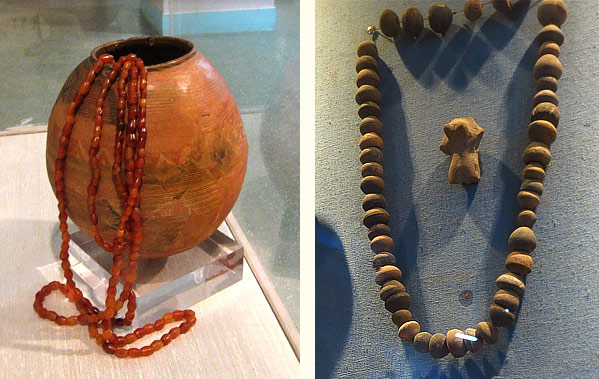
If the necklaces made out of carnelian beads were a major hit, the craftsmen immediately got to work at their lapidary workshops, to manufacture more. They began by arranging yellow chalcedony which would be repeatedly heated in a pot packed with sawdust. Once the workers realized that the yellow color had deepened and was now red, they would begin to carefully arrange the carnelian beads in the form of a fantastic necklace. Some of these necklaces were locally distributed while some were transported to the other ancient civilizations of the world like that of Mesopotamia in present day Iraq.
The Harappans who bought these items, fashioned themselves in many different ways and the adornment of these ornaments was not subjected to any strict gender-roles. Some women glamorised their entire arms with a set of colorful bangles and wore alluring anklets, men wrapped themselves in beautiful shawls and wore heavily-beaded necklaces.
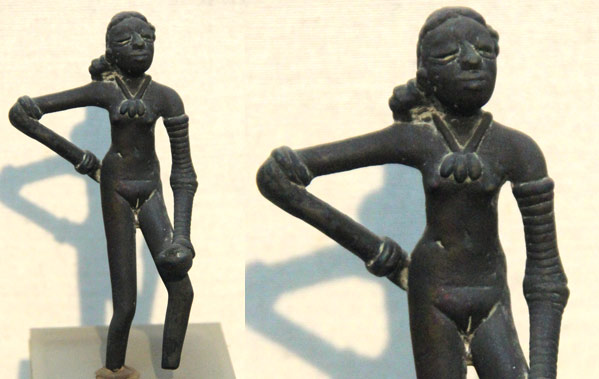
Parents set the hair of their children with the help of ivory combs. Some of these children imitated adults by wearing accessories, too huge for them in size!
Not only did the Harappans use these handcrafted ornaments to beautify themselves but they also incorporated these materials into their spiritual life. When members would pass away, the family tended to bury them with their accessories on. The prosperous ones were buried with beads made of exotic and raw materials while some were buried with beads made of agate and faience, across their upper arms. Perhaps, this practice was implemented to ward off evil or they were performed as a means of assuring themselves that there is an after-life where they would still require these items of beauty which were made with exemplary skills.
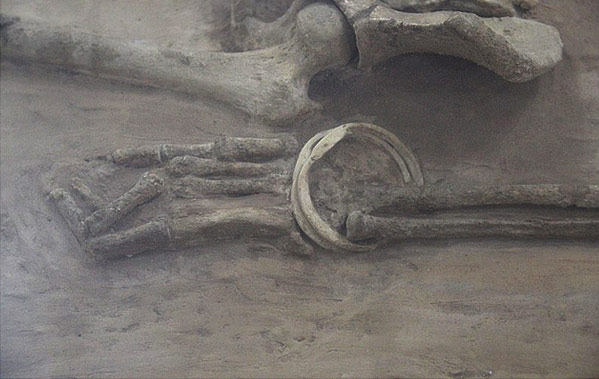
For many Harappans, the entire day went with them dedicatedly spending hours to master the craft of their works. Some busied themselves with collecting items, while some helped in manufacturing, some transported goods on bullock-carts while some helped in arranging these items in various shops. After an exhausting day of work, these workers began their journey home. Workshops closed for the day and the sun settled down. Lights were lit up in handcrafted earthen lamps as another day in Indus came to an end.
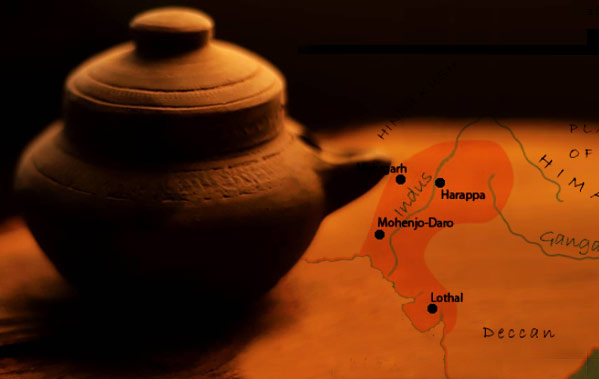
It’s been 5000 years since the Indus Valley civilisation flourished in areas of what is now India, Pakistan and Afghanistan. Thousands of years later, we can still witness the various continuities from the past when it comes to designing our accessories even today; be it the manner in which we adorn our bangles, design our handcrafted necklaces or wrap our shawls. Rings beautified by the use of carnelian and household items of faience, have still not gone out of fashion.
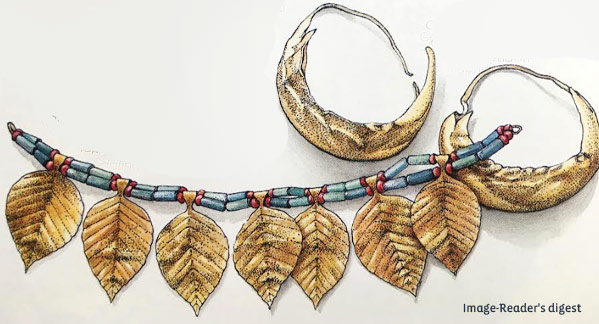
Every single innovation in the field of design; jewellery making, textile art and embellishment…all these developments can be traced back to history that we very enthusiastically have learnt in popular culture to downplay. Designers and fashion enthusiasts take inspiration from these ancient marvels which were fashionable then and create collections in vogue today.

It is this tendency to associate ourselves with a false notion of what we are told defines ‘modern’ without crediting the past it is based on and built up on, that lands our new breed of people floating baselessly. The creativity which flourished in the past is the mother of all innovations today and the forms of it existent today as craft clusters, often the most ecofriendly… teaching everybody who went too far from nature what life on earth should truly be about.
Often such extreme diversions as we see today lead to earth reacting in volatile manners. Pandemics, flues, earthquakes and natural disasters are a language earth is talking to us in today. This glorification of modern- day industries and an overshadowing of crafts which are considered ‘primitive’ by the flagbearers of modernity, is the reason behind the suffering of many. However, if we slow down, take some effort and revisit time, like we did today, it will be revealed to us that the past has a lot more to offer than what we are made to believe. It offers an inclusive lifestyle which prioritizes respect towards our resources.

For long, Harappa had not been able to capture popular imagination in ways other ancient civilisations did and thus, the archaeologist, Geoffrey Bibby, rightly stated that the “Indus Valley civilization is the Cinderella of the ancient world.” Till date, scholars have made several attempts to decipher their script but there has been no success. The Harappans have remained silent, unable to narrate their own tale. Therefore, for the time being, we can only admire the great craftsmanship left behind by the Harappans, for the story of the people behind these crafts is yet to be told.


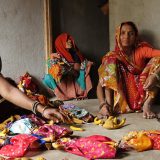








Nehchal
Beautifully written
Raksh
A very interesting read! The existence and impact of history in every fold of present day culture and art was a fascinating concept to think about.
Ermillla
Lovely description. Almost made me feel like I’ve time travelled to the beautiful past.
Shambhavi Sud
Great work
Fae
Beautiful words do justice to the glory of the Indus Civilization! Great read!
Reeta
Wow couldn’t stop reading! The Indus civilization is so unbelievably fascinating!
Arnav
Reading this made me feel as if I was actually there. History is amazing.
Chingkhei
The manner in which this article is able to give such vivid descriptions of trade-connections is really impressive. I was particularly interested in how a picture of a ‘Day at Harappa’ is built in the mind of the readers. Great work!!